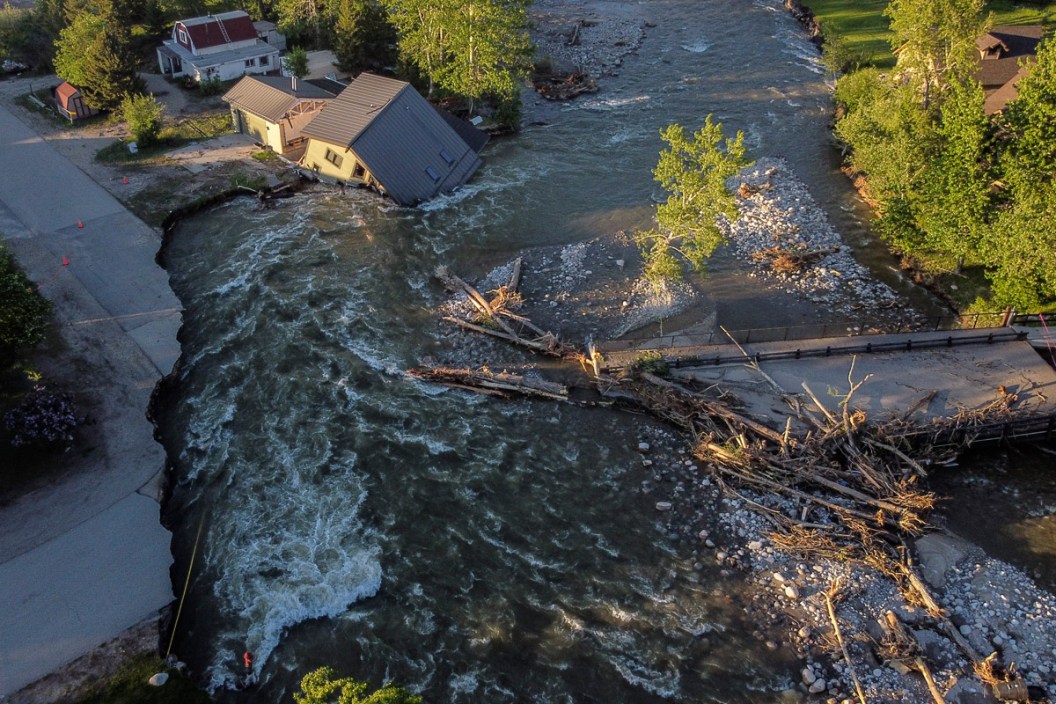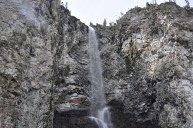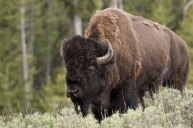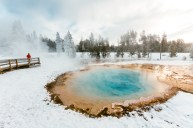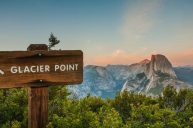Yellowstone National Park reopened three of its five entrances to visitors yesterday following the catastrophic floods that walloped America's most prized landscape and forced 10,000 to evacuate on June 13.
According to the National Parks Service, the Madison, Old Faithful, Grant Village, Canyon Village, and Norris areas of the park are now accessible to visitors again after the South, West, and East entrances opened back up to visitors. However, the reopening of only the south loop did cause major traffic backups, despite the number of visitors was drastically smaller than what Yellowstone sees on a typical day.
Officials expect the northern region of the park, which includes Mammoth Hot Springs and Lamar Valley, to remain closed until early July, as will many of the park's famous wildlife-viewing areas in the south loop region. The park's focus is now inevitably shifting toward summer tourism, as the closure of two park entrances and several key routes into Montana tourist towns will simply create too much congestion.
"It is impossible to reopen only one loop in the summer without implementing some type of system to manage visitation," said park superintendent Cam Sholly.
With the exception of public vehicles, employees, mail carriers, contractors, and current commercial use operators with permits, the park will admit vehicles with license plate numbers that end in an even number on even-numbered dates, and plates that end in odd numbers on odd-numbered dates. The entrance station staff will turn away anyone who shows up on a day that doesn't correspond with their license plate. Additionally, motorcycle groups will be admitted on even-numbered days, and visitors with proof of overnight reservations in the park will be permitted regardless of the license plate policy.
Meanwhile, many local towns fear the summer tourism season could be lost for them, as the amount of damage could be too much to overcome before the peak of the season is long gone, meaning local businesses will take a huge financial hit on top of extensive rebuilding costs. Nearby communities saw hundreds of homes flooded, leaving many displaced and searching for answers. Roads, particularly on the highways between Gardiner and Mammoth Hot Springs, seemingly took the most damage, as some sections were completely washed away.
"This is not going to be an easy rebuild," Sholly told the Associated Press earlier this week. "I don't think it's going to be smart to invest potentially, you know, tens of millions of dollars, or however much it is, into repairing a road that may be subject to seeing a similar flooding event in the future."
National parks and other public lands were already due to receive nearly $3 billion for maintenance and other projects yearly for five years, thanks to funding from the Great American Outdoors Act, a 2020 law passed by Congress. However, Emily Douce, director of operations and park funding at National Parks Conservation Association, estimates additional costs for pressing repairs could hit $1 billion.
